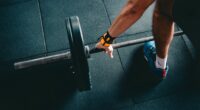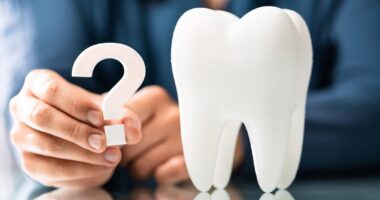The Push/Pull/Legs Program has been designed so that a person can achieve the maximum health benefits of low-intensity resistance training, high-intensity resistance training, and cardio training. The Push/Pull/Legs Program follows a simple formula: Three days of resistance training, one day of cardio exercise, and two days of rest. The Push/Pull/Legs Program is the most comprehensive training program ever designed.
Push Pull Legs is an innovative program that takes a highly effective and time-tested bodyweight-based training method and translates it into a strength training program that can be used by anyone, regardless of their fitness level or physical attributes. This is accomplished by strategically changing the training variables in the program to make it more challenging than Push Pull Legs (or basic push-up, pull-up, and leg raise programs) but less demanding than traditional strength training programs.
Chris Bumstead is the product developer of Push / Pull / Legs (he invented the program and the name in 1994, and now makes it available freely online). He is also the inventor of the running form diagnostic, the “Stride Length” scale (also called the “run form” scale), and the “Pulse” test. His other interests include running, biking, hiking, and other outdoor activities, and he is the author of the book Push, Pull, Legs.
Chris Bumstead is one of the most popular bodybuilders in the world. He has won the 2019 Mr. Olympia Classic bodybuilding competition at 220 two years in a row and has an incredible physique.
Chris combines the classic aesthetic of the golden age of bodybuilding with the muscular size of a modern professional. I didn’t think I’d ever see anyone do a vacuum pose like Frank Zane did in 1997, but Chris proved me wrong!
Chris generally trains according to the typical bodybuilding pattern of a bro-split, training each muscle group once a week on a separate training day. Recently, however, Chris has begun to experiment with higher frequency training programs.
One of his favorite formats for high-frequency training is the 6-day format of push-ups, pull-ups, and legs. Look at this:
Chris Bumstead 6-Day Split Bench Press / Deadlift / Legs
- Monday: Key 1
- Tuesday: No. 1 Pull out
- Wednesday: Legs 1
- Thursday: Button no. 2
- Friday: Sweater #2
- Saturday: Legs #2
- Sunday: On the website
Split Push/Pull/Legs is a form of workout organization where you do 3 separate full body workouts. You have a press day where you work chest/shoulders/triceps, a pull-up day where you work back/biceps, and a leg day where you work quads, hamstrings and calves.
The main benefit of the press/shoulder/leg split is that it reduces overlap between muscle groups. For example, you never have to worry about your shoulders or triceps getting too sore and interfering with your chest workout because they are all trained on the same training day.
Chris Bumstead really likes the 6-day split of bench press/pull-ups/legs because it allows him to train each muscle group twice a week. It took Chris a while to get used to this high frequency training, but now he really likes it.
Here’s Chris Bumstead himself talking about his new training program:
As you can see, Chris trains each muscle group with two completely different exercises each week. This is a great way to diversify your workouts and prevent your body from adapting to your usual routine.
Now let’s take a look at the push, pull and leg workouts that Chris uses. Look at this:
Pushup Workout #1 by Chris Bumstead
- A1 : Bench press (oblique or flat), 3 sets of 5-8, 5-8, 10-12 reps.
- B1 : Alternate shoulder presses, 3 sets of 10-12 reps.
- C1 : Chest pull variation (your choice), 3 sets of 10-12 reps each.
- C2 : Triceps extension variation (your choice), 4 sets of 7-10 reps.
- D1 : Side lift, 4 sets of 10-12 reps**.
- E1 : Flexion, 3 sets to failure
*Allows a rest period of less than one minute
Chris uses some interesting strategies in this training. Chris didn’t plan all the exercises. Instead, he plans the type of exercise and chooses it when he arrives at the gym based on how he feels.
For example, Chris starts his workout with a bench press or a flat bench press. To train the chest and triceps accessory, he performs supersets of a chest curls and triceps extensions in the prone position. This is an interesting strategy for hypertrophy training if you already have a good strength base.
Pulling Training by Chris Bumstead #1
- A1 : Leg raise (any grip), 3 sets of 8-10 reps**.
- B1 : Inclined rows with dumbbell, 3 x 6-8, 6-8, 10-12
- C1 : DB-Curl at 60 degrees, 4 sets of 10-12 reps each
- D1: pull-ups (each grip), 3 sets to failure
- E1 : Standing curls at the bar, 2 sets of 10-12 reps
- F1 : Standing curls at the bar, 2 sets of 40 seconds in tension
** Perform a double fall to failure in the last set.
Every bodybuilder has weak body parts they need to strengthen, and Chris Bumstead is no exception. He says his back and biceps always lag behind the rest of his body, so he works like crazy during his pull-ups.
Chris increases calories on days he’s hungry, takes more caffeine, and does anything he thinks will help. The workout itself is a typical moderate volume exercise for the back and biceps.
Chris does three exercises each for the back and biceps. One interesting thing Chris does is he uses time under tension sets for the last biceps exercise. Instead of aiming for a specific number of reps, he aims for 40 seconds of tension time with the weight. This is a very interesting strategy that powerlifting coach Dave Tate has used in the past to build muscle.
If you want to know more about time under stress, be sure to read my article Time Under Stress: The ultimate guide! I cover everything you need to know about how to use time under tension to increase size and strength.
Chris Bumstead’s leg workout #1
- A1 : Walk with alternating lunges (dumbbell on back), 3 sets of 12-15 reps each
- B1 : Romanian or regular deadlift, 3 sets of 6-12 reps**.
- C1 : Thigh curl or gluteal pull, 3 sets of 10-12 reps.
- D1 : Calf raises in a squat position, 6 sets of 10-12 reps each
- E1 : Squat (any variation), 2 sets of 10-12 reps each
- F1 : Leg curl (any variation, 2 sets of 40 seconds in tension)
**Sets of 6 to 8 reps for a normal deadlift, or sets of 10 to 12 reps for a Roman deadlift.
Chris has two leg workouts, one where he uses squats and one where he doesn’t. Instead of squats, Chris does a variety of leg exercises, including lunges, core raises, thigh pulls, calf raises and leg extensions.
Chris says rocking has greatly improved the health of his knees in recent years. Once again, Chris uses his favorite technique of time under tension during leg extensions. Instead of doing a certain number of repetitions, he sets a timer on his phone and does the exercise for 40 seconds.
Push-Up Workout by Chris Bumstead #2
- A1 : Bench press with closed hand, 3 sets of 10-12 reps.
- B1: Dumbbell bench press, 4 sets of 10-12 reps
- C1 : Leg raises, 1 set of 8-10 reps, 2 sets of 40 seconds TUT
- D1 : Triceps curl (your choice), 3 sets of 10-12 reps.
- E1 : Side lift (any variation), 4 sets of 10-12 reps each
- E2: Push-ups (any variation), 3 sets to failure
Chris Bumstead’s second weekly bench press workout is very similar to his first weekly workout. The main difference lies in the choice of exercises. Again, Chris keeps it to two basic exercises for each body part. He uses the closed grip bench press and overhead extensions to train his triceps, the bench press and lateral raises to train his triceps, and leg raises and push-ups to train his chest.
In my experience, using two exercises for each body part per push day is a very achievable goal.
Chris Bumstead Pull-Up #2
- A1: pull-ups (any variation), 3 easy sets with bodyweight only
- B1: Bar pull-ups, 2 sets of 8-10 reps
- C1 : Hammer Twist, 3 sets of 8-10 reps
- D1: rear grip, 3 sets of 10-12 reps each
- E1: rope twists, 3 sets of 10-12 repetitions
- F1 : Seated cable rows, 2 sets of 20 reps each.
- G1 : Standing squat, 1 set, stretch run to failure.
Chris’ second weekly pull-up workout is even more intense than his first. It works on your back and biceps with 3 different exercises performed at different angles. Chris also adds some light pull-ups during the rack warm-up to loosen up the back and train the glutes.
Chris finishes the workout with one of Arnold Schwarzenegger’s favorite training methods: the stand-up run. Chris takes 40 pound dumbbells and does reps to failure. Then he moves on to the next lighter pair of dumbbells and performs reps with them.
He continues until he lifts the 5-pound dumbbells off the end of the rack. It’s cruel!
Chris Bumstead’s leg workout #2
- A1 : Back squat, 4 sets of 8-10, 8-10, 8-10, 4-6.
- B1 : Legs press, 2 sets of 40 seconds TEXT
- B2 : Leg press in calves, 2 sets of 10-12 reps.
- C1: hip adductor training, 4 sets of 10-12 repetitions each
- D1 : Standing calf raises, 4 sets of 10-12 reps**.
- E1 : Leg curl trainer, 4 sets of 10-12 reps****
**Do 10-12 reps to failure, then do as many partial reps as possible from the bottom position.
****During the last two sets, perform a triple fall. Perform 10-12 reps to failure, drop the weight, reach failure, drop the weight, reach the bar, done!
Chris Bumstead’s second lower body workout looks much more normal than the first. He starts with a few heavy sets of squats, then he does various lower body support exercises.
What’s interesting about this workout is that Chris does 2 sets of double leg extensions in the last workout. Here are Chris’ exact thoughts on this technique:
I’ve always thought triple drop sets are a good way to end them.
This is certainly an interesting technique. In general, Chris’ lower body workouts require less effort than his upper body workouts. This makes sense given that Chris competes in classic bodybuilding. The classic bodybuilding look consists of aesthetically shaped legs, a narrow waist and a broad upper body with thick muscles and prominent shoulders.
Conclusion
Chris Bumstead’s 6 day push/pull/leg workout is very interesting. Chris uses two completely different workouts for each body part and applies a variety of high-intensity training techniques to each workout.
If you have excellent recovery skills and can handle 6 tough workouts a week, try this routine!
Never believe opponents when they say your ideas are unrealistic. You are just too short sighted to see all the great opportunities you see in this world.
Thanks for reading and good luck with your strength training!
Dr. Mike Jansen.
Thanks for stopping by my site! My name is Dr. Mike Jansen, PT, DPT. I am the creator/owner of Revolutionary Program Design. My goal is to make RPD the best strength training resource on planet Earth. if you are from another galaxy, anything is possible! So lean back, kick back and relax. There has never been a better time to train or learn the art and science of developing strength training programs.
Latest materials
Stan Efferding knows a thing or two about training for a big bench press. Stan has lifted over 800 pounds several times in his career, including 837.5 pounds in one match …
Link to the 5 benefits of bench pressing/pulling/leg splitting!
The 5 benefits of the bench press/shoulder press/separate legs!
The Split Press / Deadlift / Leg is one of the most popular split workouts in the world. Many of the world’s greatest and strongest athletes, including Ronnie Coleman and Andy Bolton, use this…What Chris Bumstead is doing with his program is revolutionary. When you look at the lineage of bodyweight training programs you will see many that have come before him.
But when you view the lineage of most of these programs, you will also see that most of them are not very effective for the majority of people. But you don’t see that with the Push / Pull / Legs program. Bumstead’s program is a true bodyweight program that addresses all three of the major muscle groups, and works from beginning to end.. Read more about cbum app review and let us know what you think.




